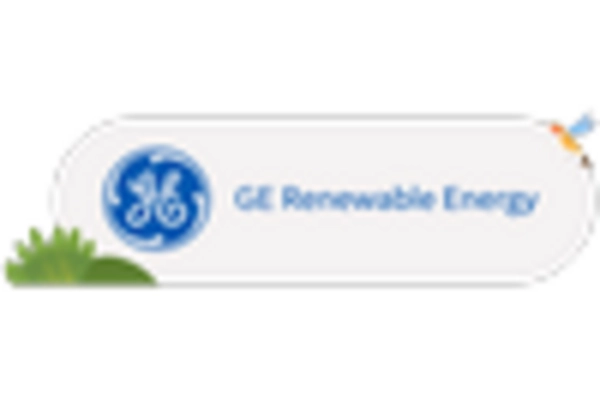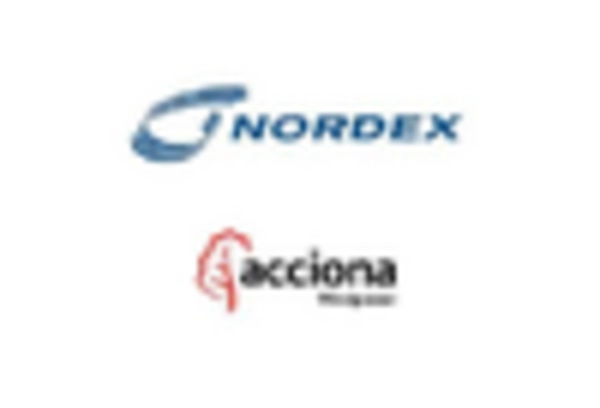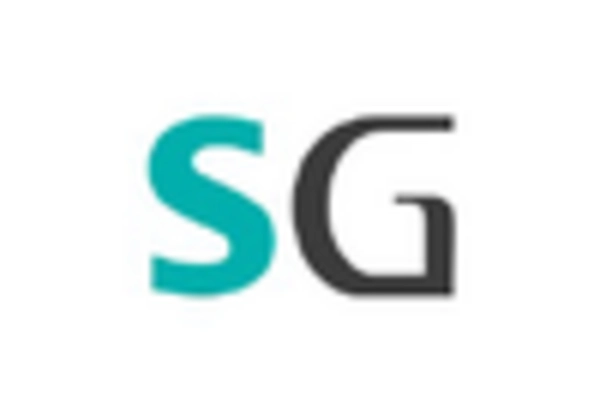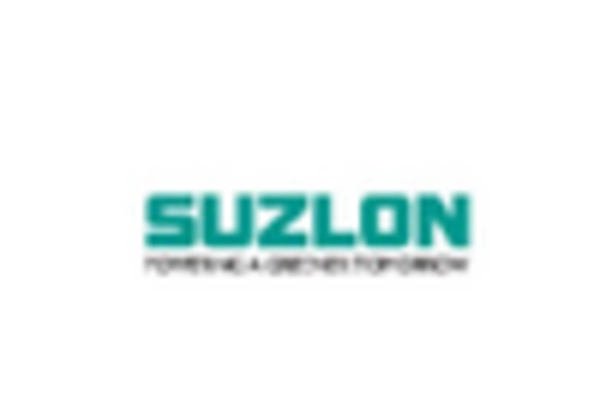Germany : Strong Infrastructure and Innovation Hub
Germany holds a commanding 44.4% market share in the small wind-power sector, valued at $800.0 million. Key growth drivers include robust government incentives, a strong focus on renewable energy, and increasing demand for sustainable solutions. The country has implemented favorable regulatory policies, such as feed-in tariffs and tax incentives, which encourage investment in small wind technologies. Additionally, advancements in infrastructure and industrial development support the growth of this sector.
UK : Government Support Fuels Growth
The UK accounts for 22.2% of the European small wind market, valued at $400.0 million. Growth is driven by government initiatives promoting renewable energy, including the Feed-in Tariff scheme. Demand for small wind systems is rising, particularly in rural areas where energy independence is sought. The UK government has set ambitious targets for carbon reduction, further boosting the sector's appeal.
France : Focus on Local Energy Solutions
France holds a 19.4% market share in the small wind sector, valued at $350.0 million. The growth is propelled by local energy initiatives and a commitment to reducing carbon emissions. Regulatory frameworks support small wind installations, particularly in rural regions. The demand for decentralized energy solutions is increasing, driven by both environmental concerns and energy security.
Russia : Expanding Infrastructure and Investment
Russia represents 16.7% of the small wind market, valued at $300.0 million. The country is witnessing a gradual shift towards renewable energy, supported by government policies aimed at diversifying energy sources. Key growth drivers include increasing investments in infrastructure and a growing awareness of environmental issues. Demand is particularly strong in remote areas where traditional energy sources are limited.
Italy : Rural Focus and Technological Advancements
Italy captures 13.9% of the small wind market, valued at $250.0 million. The sector is driven by innovative technologies and a focus on rural energy solutions. Government incentives, such as tax breaks for renewable energy projects, are fostering growth. Demand is rising in regions like Tuscany and Lombardy, where small wind systems are increasingly seen as viable energy sources.
Spain : Strong Market with Diverse Applications
Spain holds a 13.9% market share in the small wind sector, valued at $250.0 million. The market is characterized by a diverse range of applications, from agricultural to residential uses. Government policies promoting renewable energy integration are key growth drivers. Regions like Andalusia and Catalonia are leading in small wind installations, supported by favorable wind conditions and local initiatives.
Rest of Europe : Varied Growth Across Sub-regions
The Rest of Europe accounts for 5.6% of the small wind market, valued at $179.03 million. This sub-region includes a mix of countries with varying levels of market maturity and regulatory support. Growth is driven by localized initiatives and the need for energy independence. Countries like Denmark and the Netherlands are notable for their advanced small wind technologies, while others are still developing their markets.

















Leave a Comment